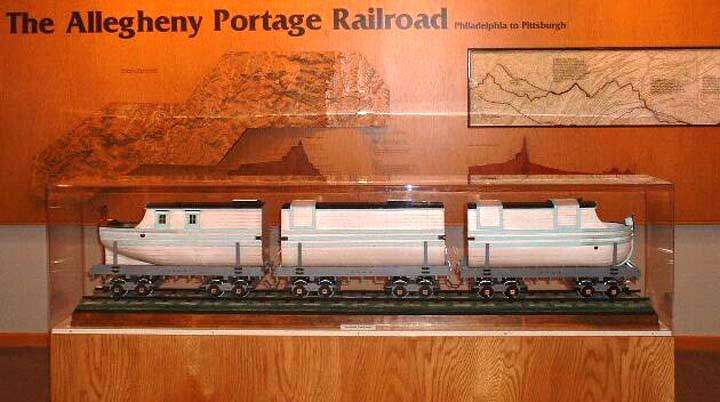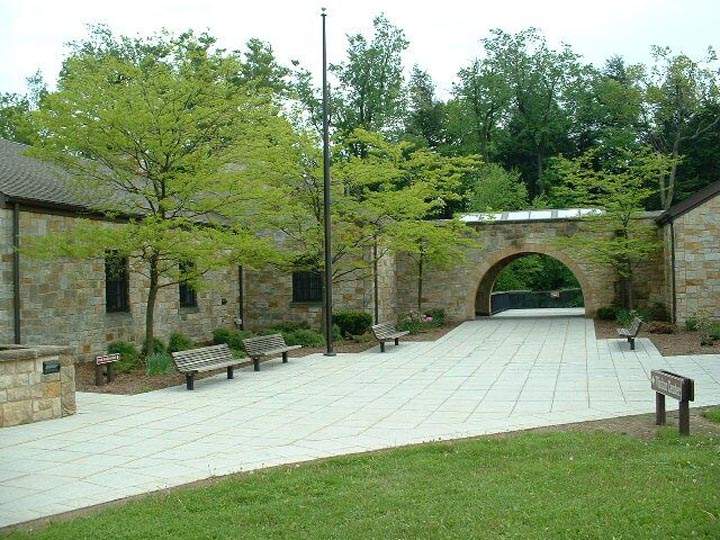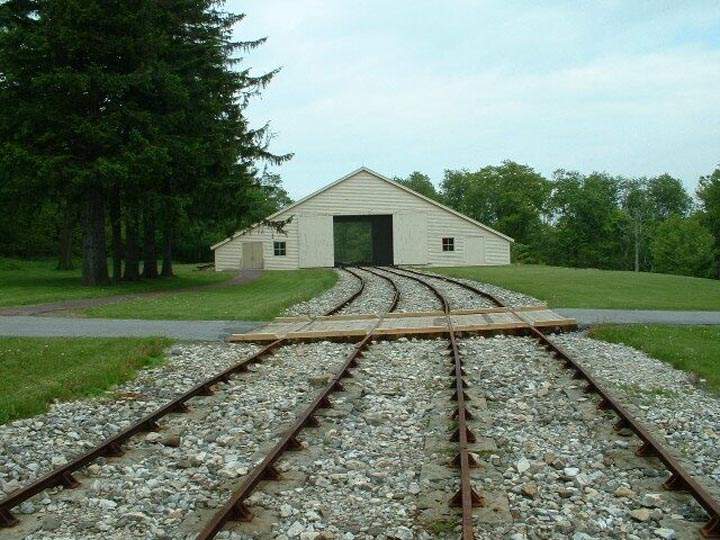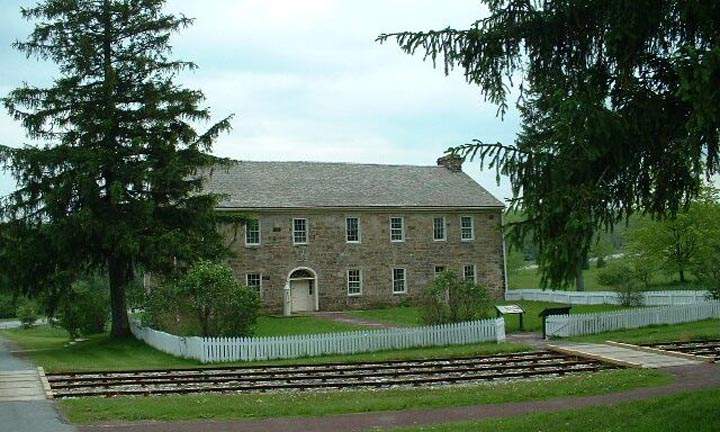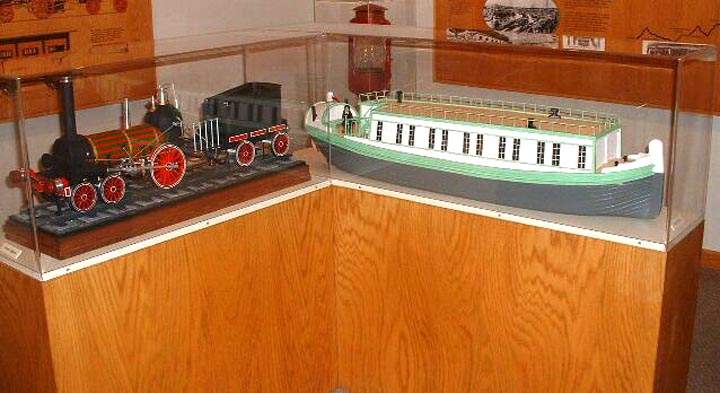Pennsylvania’s Historic Canal & Railroad System
By Don Woodwell
Ever heard of the Allegheny Portage Railroad? It was the only American railroad that carried fully laden canal boats on flat cars.
The APR was a great technological feat in 1834. It began its’ steep climb up the Allegheny Mountains a little west of Hollidaysburg, an old town four miles south of modern Altoona, and then descended on the western slope to Johnstown. (1)
The APR was not a link in the Pennsylvania Railroad but a division on the Pennsylvania Canal ‘s Main Line . This was, after all, the height of the canal building period. For 20 years, Main Line was the most efficient method of transporting the western Pennsylvania ‘s manufactured products eastwards across the mountain barrier, and in the opposite direction, Philadelphia ‘s imports and products to Pittsburgh ‘s warehouses and market places.
So, how and where do the canal boats enter the railroad picture? Once the waterways stopped at the Allegheny mountain barrier, the boats were hauled out of the canal and loaded onto railcars. If the boat was small, the whole thing sat on a one flat car. If it was too long for a single car, then it was broken down into sections and loaded onto multiple cars.
A track ran parallel to and 100 feet from the canal basins at the end of the railroad. Piers extended into the basins along which the boats were tied up awaiting crane loading onto the rail cars. Once the boats were loaded onto one or more rail cars, the cars were pulled to the main railroad track and connected to it on a turning platform.
Besides boats, all sorts of merchandise freight were loaded onto the APR cars. Even small passenger coaches were included in the consists. Warehouses built on the piers were the hubs of commercial activity during the peak years of the APR’s life.
The entire APR covered a total horizontal distance of 35 miles. In the first ten miles, five inclined planes (average grade = 8.9%) raised the westbound trains approximately 1,923 feet. Eastbound trains were raised about 1,138 feet with five inclined planes (average grade = 8.36%) spread out over a 25-mile right-of-way. Between each incline plane was a “level” ranging from over 13 miles (#2) to just under 800 feet.
So, what kind of motive power pulled fully loaded trains up slopes of almost nine percent grade? Would you believe stationery steam engines with pulleys and ropes at the top of each slope?
” The engines are of the high pressure kind; they have two cylinders, the pistons of which work the cranks that are affixed to the eight inch axle of an eight foot vertical sheaves over which ropes are placed. The ropes are attached to the cars that are being raised or lowered on the plane. The stationary engine cylinder bores are 13″ or 14″ depending upon the grade of the plane they are working, and their stroke is five feet. The smaller engines are nominally rated at 30 horsepower and the larger ones at 35 horsepower although they can produce up to 60 horsepower with more steam at higher temperatures. The three steam boilers that feed each engine are 30 inches in diameter and are 20 feet (larger engines) or 18 feet (smaller engines) long .” (2)
In the APRs early days, hemp ropes 3.5 inches in diameter ranging from 2,960 to 6,234 feet in length were used on the slopes. Amazingly, the total length of the hemp ropes was over 11 miles and they weighed about fifty-nine tons. Ropes rotted and became worn due to their heavy service and the mountain climate. Most lasted only one season. Within a few years, though, wire rope became common on the APR. Instead of large diameter hemp ropes, steel wire rope with the same or greater strength but half the size were used.
On the levels, locomotives with names like ” Boston ,” ” Delaware ,” and “Allegheny” were the first; second; and third; respectively, placed into service in the first year pulling the trains on the levels between inclines. The ” Pittsburgh ” began its APR service in 1835. Horse teams pulled trains on levels where there were no locomotives.
Although the APR was an economic success, it was only a stopgap measure. Clearly there had to be a better way to reduce the effort required to haul canal boats onto and off of the APR cars and the time to traverse the Hollidaysburg to Johnstown route as well as the slow pace of canal travel. It took 10 days to deliver a load from Philadelphia to Pittsburgh by canal and the APR. Today, it takes less than 24 hours.
The State of Pennsylvania in 1840 set out to explore other means of getting a railroad over the Allegheny Mountains . In 1854, the Pennsylvania Railroad Company finished the Horseshoe Curve enabling trains to run continuously from Altoona to Johnstown over the summit at the Gallitzin Tunnels near Cresson. This year, Altoona celebrated the Curve’s 150th anniversary.
If you plan to visit the Horseshoe Curve near Altoona, don’ t miss the APR National Historic Site maintained by the National Park Service near the Gallitzin exit on US Route 22 west of Altoona. There you can see not only exhibits, information, and a film but also walk through a stone quarry to Incline Plane 6.
Within Engine House 6 the remains of the original stationary engine house foundation are preserved and maintained, and a life sized engine model is exhibited.
A short distance away is the original Samuel Lemon house on Cresson Summit that he built as a home, tavern, and business to serve APR travelers.
======================================================================
References:
(1) Historic Pennsylvania Leaflet No. 19
(2) Sylvester Welch’s Report on the Allegheny Portage Railroad (1833) with introductions and copyright by William H. Shank, P.E., Thomas Publications, Gettysburg, PA, 1975
(3) Allegheny Portage Railroad brochures

